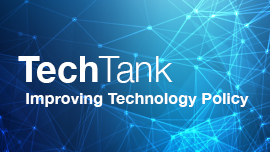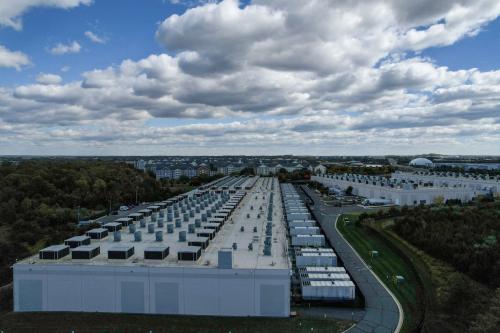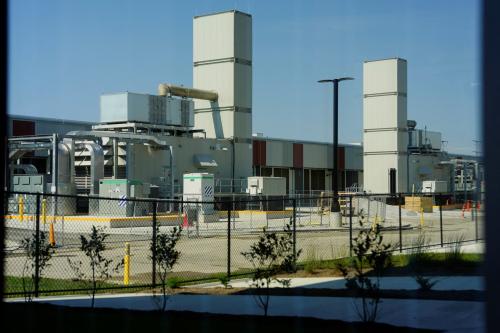Financial bubbles are notoriously hard to predict. From 1636-1637, when Dutch tulip prices went through the roof before collapsing spectacularly, to the buildup in stock prices in the late 1920s that eventually led to the Great Depression, or the dot-com meltdown of 2000, bubbles have often caught people by surprise. As recently as 2008-2009, the high prices of housing and financial assets unexpectedly collapsed and destroyed billions in valuations.
Today, high stock prices driven by a relatively small number of tech companies emboldened by the AI boom have led some to ask whether we are on the precipice of an AI bubble. As noted recently in The New York Times, “80 percent of U.S. stock gains this year came from A.I. companies.” The dramatic market gains raise questions about whether the billions spent on data centers to feed the current AI boom will generate sufficient returns to justify those investments.
On one level, it is impossible to answer this question because, as history demonstrates, experts can rarely forecast bubbles before they actually burst. But I argue that six indicators could help us monitor current AI risks and the possibilities for dashed optimism: AI investments, the timelines of data center construction, AI adoption levels, AI price levels, company competition, and public trust in technology. Watching these indicators will help people anticipate whether the AI bubble pops or grows.
AI investments
No central database tracking the total amount of money being invested in data centers, agentic AI, and AI applications exists, but there is no doubt that a tremendous sum is currently being devoted to these areas. Data centers, which house the file servers and network equipment that power AI, are particularly important to revenue projections. Hyperscale facilities can contain up to 10,000 file servers and cost one billion dollars a piece.
Based on press reports, Amazon says it is devoting $100 billion to data centers this year, while Meta has said it will spend over $600 billion in the coming three years. Microsoft planned to spend $80 billion in 2025, while Google said it will devote $75 billion in the same timeframe. Moreover, Apple is planning $500 billion in expenditures over the next four years, including in AI. With many other large firms committing billions in data centers and related AI initiatives, it is clear AI investments are running into the trillions in actual or planned expenditures.
As this extraordinary amount of money is devoted to the AI sector, it is crucial to monitor investment levels to ensure they remain in balance with potential revenues. Data centers are closely linked to high stock valuations because they underpin the expectation that the billions spent on them will yield more billions in new AI revenues.
Data center construction timelines
A second factor to watch is how long it takes to build data centers. Important aspects include how quickly companies can secure the electrical power required to operate them, get permitting reforms that will facilitate construction and operations, address growing community opposition to proposed sites, and meet workforce needs for electricians, plumbers, and construction workers essential to building these facilities.
As Nicol Turner Lee and I note in a paper on data centers, it’s unclear how quickly each of these questions can be addressed. Persistent delays in data center construction and in the rollout of the AI systems reliant on these facilities could jeopardize revenue. Until we resolve these issues, it will be hard to know whether current AI revenue projections are justified.
AI adoption rates
The third indicator to watch is the pace and breadth of AI adoption across consumers, businesses, and governments. Achieving the billions, or trillions, of dollars in projected revenues depends on the rapid and widespread uptake of AI applications, assistants, and agents. Slow adoption rates could expose the investments as overly optimistic and increase fears of a bubble burst.
AI price levels
A fourth factor to watch is the price of AI products. If widespread interest is paired with high prices, companies will reap billions and justify the investments in the sector.
AI investors are optimistic about government contracts for AI-powered military applications, such as in intelligence-gathering and Golden Dome-type defenses that could justify ambitious revenue projections. The Trump administration has major plans for AI deployment across defense, health care, transportation, and finance, suggesting that substantial federal funding could flow into these sectors. The crucial factors to track are how quickly contracts are awarded and how rapidly firms can develop and deploy effective applications.
Company competition
One aspect that could limit prices is the degree of competition among defense contractors, tech companies, and AI developers. Major tech companies and specialized startups are now marketing large language models and other AI tools. What remains uncertain is whether the AI market will continue to be dominated by a few large providers able to set prices, or whether a broader field of competitors will emerge, constraining the pricing power of large companies. The latter outcome would make it difficult for them to achieve ambitious revenue targets and justify their investments.
Public trust in technology
The final factor to monitor is public trust in AI. Historically, trust has been closely linked to technology adoption rates, making it essential to track public sentiment toward AI and its implications for both adoption rates and pricing potential. If people trust the technology, adoption will accelerate, generating the revenue needed to justify current AI investment levels and stock valuations.
In looking at public opinion polling, though, one can see considerable public skepticism about AI. People are worried about safety and security, data privacy, the impact on the job market, and existential threats to humanity. Press headlines are regularly filled with worries that AI will rob jobs from entry-level and professional workers, that chatbots harm mental health, that agentic AI runs beyond human control, that criminals are using AI to scam unwitting consumers, and that super-intelligent machines will ultimately enslave humans. Steven Levy of Wired encapsulated these fears in a recent story entitled “Why AI Breaks Bad,” in which he explores how large language models sometimes can “turn evil.”
Certain groups are particularly worried, including senior citizens who tend to be less comfortable with new technologies and Black women, who, as reported by Zarah Guillemet and Raj Korpan, have “deep anxiety about its use.” Specifically, they worry that AI applications in law enforcement, the military, data tracking, and health care could subject them to discrimination.
Building public confidence in AI through safe company products, responsible policy guardrails, and trustworthy systems is vital. Ultimately, public sentiment may determine whether the current AI boom proves sustainable or collapses into a bubble.
-
Acknowledgements and disclosures
Amazon, Google, Meta, and Microsoft are general, unrestricted donors to the Brookings Institution. The findings, interpretations, and conclusions posted in this piece are solely those of the authors and are not influenced by any donation.
The Brookings Institution is committed to quality, independence, and impact.
We are supported by a diverse array of funders. In line with our values and policies, each Brookings publication represents the sole views of its author(s).







Commentary
Is there an AI bubble?
November 7, 2025